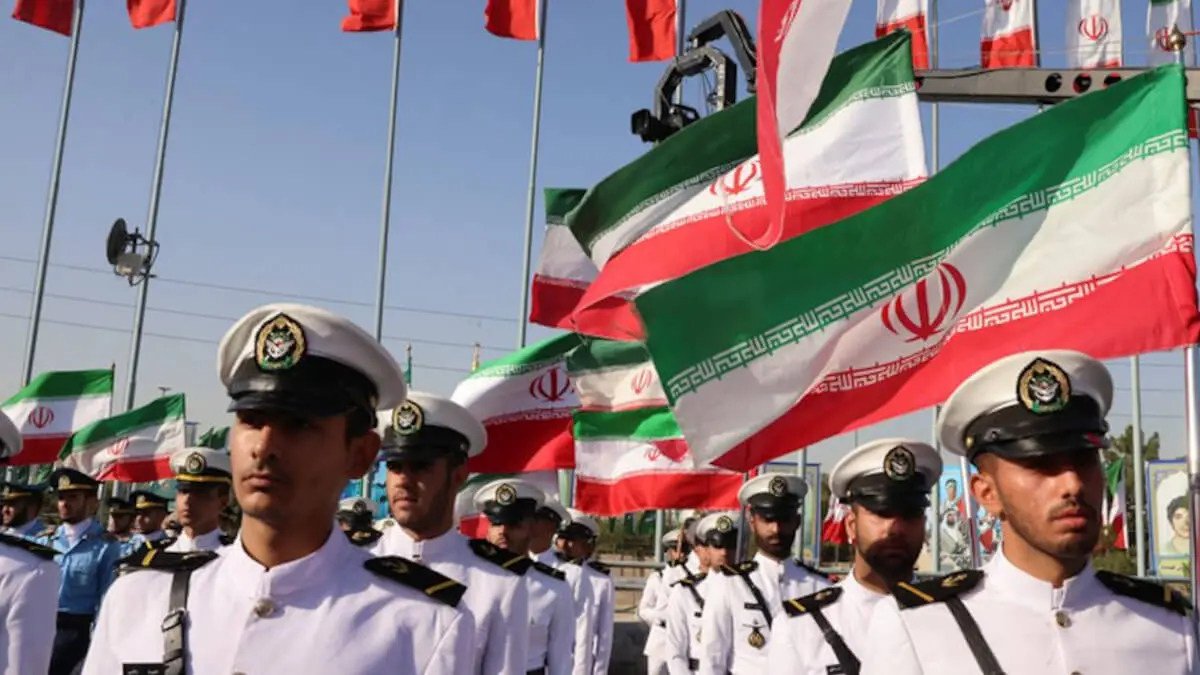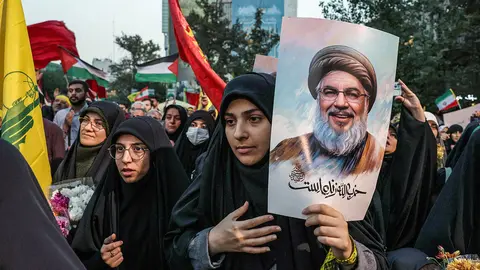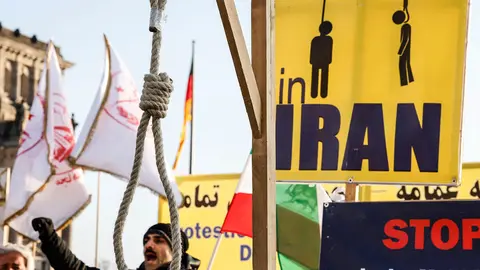One year after 7 October: where is the war in the Middle East heading?

- The key actors in the conflict
- ‘Death to Israel’ as a basis for internal repression
- The 2022 uprising in Iran
- Warmongering: the heart of the Mullahs' regime
- Where is the current war headed?
Looking back, the main drivers of the current war in the Middle East date back to 2020. The first significant factor was the signing of the Abraham Accords on 15 September 2020 by high-level delegations from Israel, the United Arab Emirates and Bahrain, under US auspices at the White House. This agreement marked the beginning of the normalisation of relations between Israel and several Arab countries, ushering in a new era.
This step aroused the hostility of the mullahs' regime, as it undermined its long-standing slogan ‘Death to Israel‘. Ali Khamenei, Iran's Supreme Leader, considered the deal an existential threat to his regime.
‘Death to Israel’ as a basis for internal repression
Arising from an archaic ideology and unable to respond to the needs of its people in the 21st century, the Iranian regime, from the moment of its foundation - imposed on Iran by an accident of history - has had to resort to repression in order to survive. To conceal this repression, the mullahs have chosen to extend their regional influence by fomenting wars and crises and promoting terrorism. This strategy has become the mainstay of their survival.
Following this warmongering policy, the regime began training support forces in the region as early as 1980, intensifying this effort in Lebanon in 1982. The regime used the slogans ‘Death to Israel’ and ‘Death to America’ to bring the most reactionary forces in the region under its influence. Huge oil and gas revenues have also been used to fund this key objective.
The 2022 uprising in Iran
A quick look at the uprisings in Iran shows that each wave of revolts has hit the regime harder. The 2022 uprising lasted several months, and although the regime managed to quell it with a brutal crackdown, an even more violent uprising was expected. This time, with the spread across the country of resistance units led by the People's Mujahedin, bitter enemies of the mullahs, the popular movement could well succeed in overthrowing the regime. Khamenei openly declared in 2021 that Iran needed a ‘Hezbollah-style government’ inspired by Qassem Soleimani. Today, Khamenei is under siege, both at home and abroad, and must break this siege.
In March 2022, in a speech in Mashhad, he declared that full support should be given to the Axis of Resistance. This statement was a clear signal that the regime was preparing for a regional war.
Warmongering: the heart of the Mullahs' regime
When Khomeini was forced to accept a ceasefire with Iraq during the Iran-Iraq war, he spoke of ‘drinking the cup of poison’. Ali Khamenei, his successor, recently admitted that the eight-year war, which cost a trillion dollars and millions of dead and disabled, had served to mask a civil war for the survival of the Islamic regime. In December 2016, Khamenei said: ‘If we had not stopped the seditionists [freedom fighters] in Syria, we would have had to fight them in Tehran, Khorasan and Isfahan,’ referring to the popular resistance in Iran.
The Iranian regime has never signed a peace treaty with Iraq, even when it has significant influence over that country. Since its inception, the regime has always been involved in regional wars and crises. Warmongering and crisis creation are the very essence of this regime: it cannot survive without them. To think that the Iranian regime could give up its warmongering tendencies, even after seeing its forces weakened in the region, would be an error of judgement.
Where is the current war headed?
If we trace the war from 7 October last year to the present day, we can see a spiral, indicating that direct confrontations between the Iranian regime and Israel are occurring at closer and closer intervals, approaching a climax. Initially, Khamenei denied any involvement in the attacks against Israel, until Israel targeted the mastermind of these attacks at the Iranian embassy in Syria. In response, Iran attacked Israel from within its own territory.
Israel then retaliated by attacking the defence systems of the regime's nuclear facilities in Natanz, before eliminating Hassan Nasrallah, the most important and strategic figure for the Iranian regime. The latest Iranian response has been to launch ballistic missiles at Israel. Military confrontations will therefore inevitably continue.
The driving force behind this war is a paradox: the warmongering nature of the Iranian regime. Although the regime has tried to transform the regional conflict, which revolves around its own warmongering, into a conflict between Muslims and Jews, in reality it has never wanted such a large-scale war. This paradox, independent of the key actors - Iran and Israel - acts as a driving force pushing the situation towards a point of no return.
The Iranian regime faces two options:
- Either it accepts a direct confrontation with Israel, which implies that it continues to support its proxy forces. In this case, Israeli attacks could destabilise the regime, creating a situation conducive to further uprisings.
- Or it ‘drinks the cup of poison’ and stops supporting its proxy forces. In that case, it will have to open up internally and, at the very least, reduce repression. So far, repression has been masked by war, but once this option is removed, the regime will have to confront dissent which, after forty years of repression, could erupt violently.
In both cases, it is up to the Iranian people and their organised resistance to overthrow this regime and free both Iran and the region from its grip. What the Iranian people really want from the international community is an end to the long policy of complacency that has allowed this regime to survive, at the cost of hundreds of thousands of deaths in the Middle East.
Hamid Enayat, a political scientist specialising in Iran, works with the Iranian Democratic Opposition (CNRI).
Article previously published in La Dépêche



